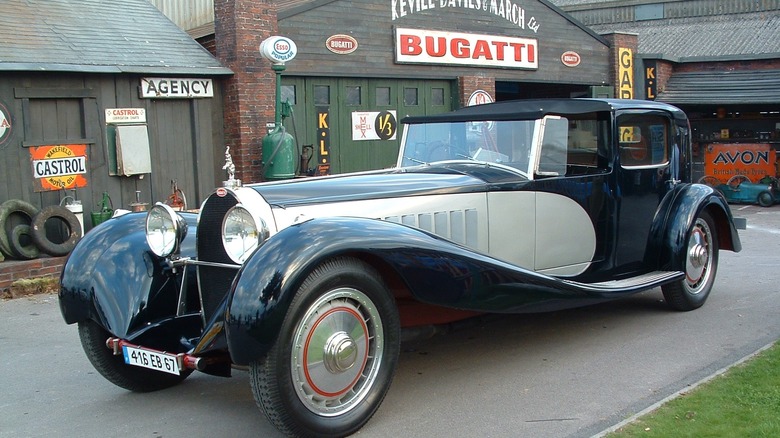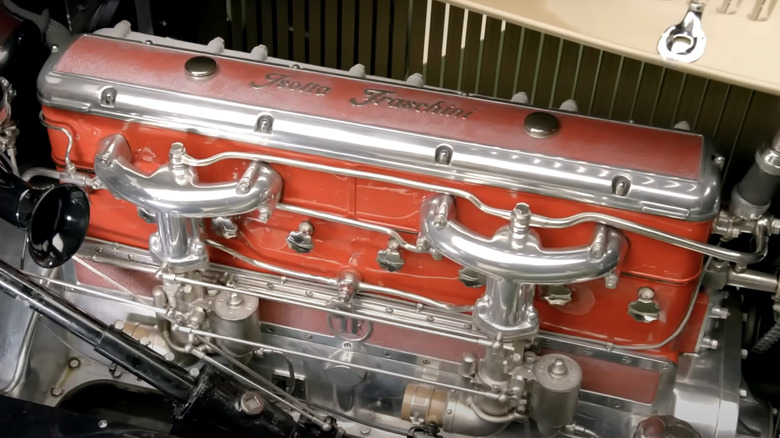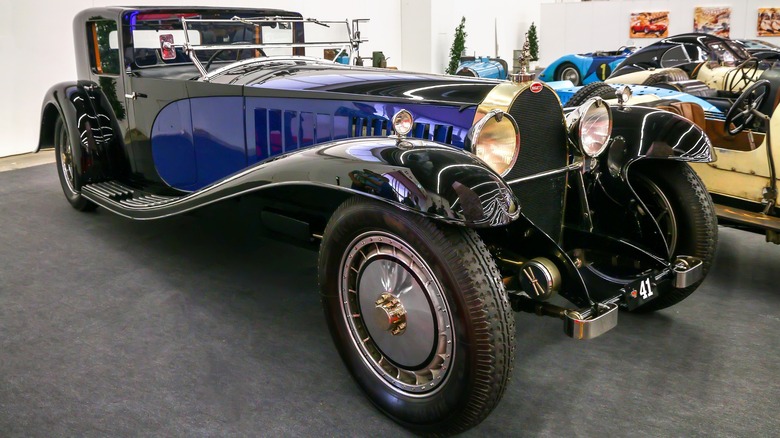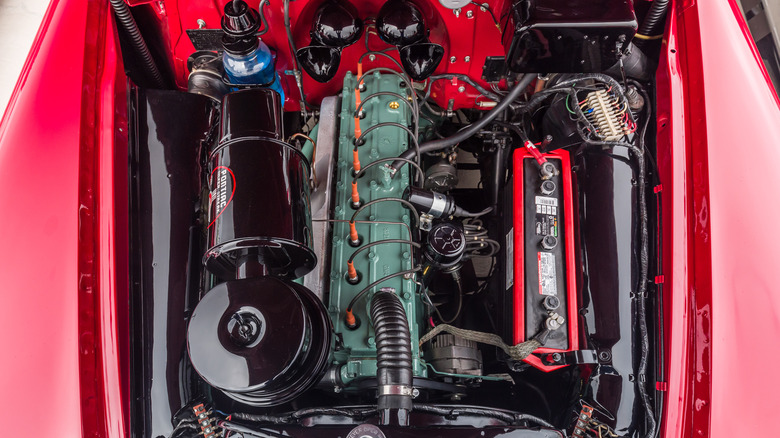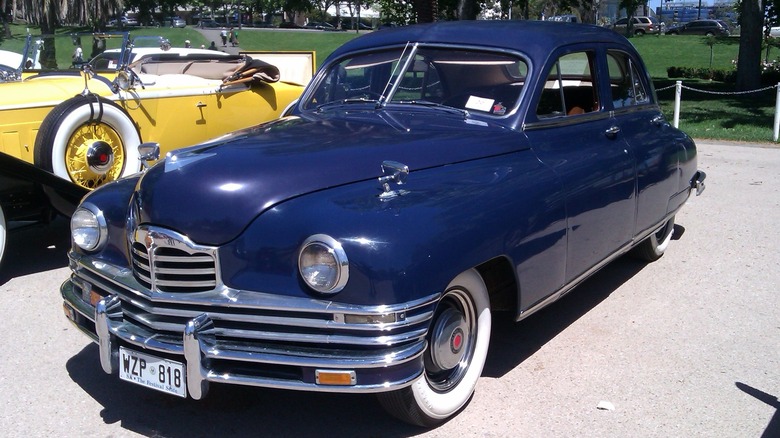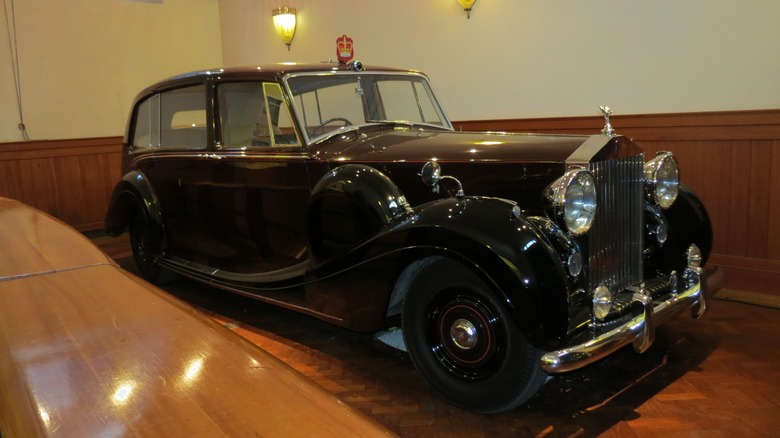6 Of The Most Notable Inline-Eight Engines Ever Built
Throughout the nearly 150 years of automotive development, manufacturers have used power plants ranging from the 1-cylinder engine in the Patent Motorwagen to 16-cylinder monsters like the magnificent Bugatti W16 that powered hypercars like the Veyron and Chiron. Most engines fall between those two extremes, with four-, six-, and eight-cylinder formats most prevalent. V4 engines are rare, but V8s and V6s are more common than their inline counterparts because they can be offered as options on the same model and shared among a manufacturer's various offerings. Inline six-cylinder motors are famously reliable and remain popular because they run smoothly and can be repaired and modified with relative ease. Straight-eight engines, however, have a short history, albeit a proud one.
Isotta and Leyland were the earliest adopters of the I-8 format in 1919 and 1920, respectively, with Duesenberg and Bugatti following close behind. Straight-eights were common from the '20s through World War II, but by the mid-'50s, Chrysler's Hemi, Ford's Y-block, and Buick's Nailhead — all V8s — had taken over. Pontiac and Packard were the last inline-8 holdouts, with both manufacturers making their last I-8s in 1954. Let's shine a light on some of the most important straight-eight engines from the format's 30- to 35-year heyday.
[Featured image by Beltane43 via Wikimedia Commons | Cropped and scaled | CC-By 3.0]
Isotta Fraschini Tipo 8
The 1919 Isotta Fraschini Tipo 8 is typically regarded as the first production car to use an inline 8-cylinder engine. Isotta's first I-8 was a 5.9-liter (360-cubic inch) engine that made 90 horsepower and was followed up by a 158-horsepower, 7.4-liter (452-cubic inch) version for the Tipo 8A and 8B. The original Tipo 8 was made from 1919 through 1924, when the Tipo 8A came along. That model hung around through 1931, when it was supplanted by the Tipo 8B.
The 8B lasted only through 1934, as the Great Depression dealt a fatal blow to the luxury car market in the United States. Tipo 8As appeared in films like 1950s "Sunset Boulevard" and the 1979 James Bond thriller "Moonraker," and ageless villain Montgomery Burns of "The Simpsons" was seen either driving or being chauffeured by trusted assistant Waylon Smithers in his white 1931 Tipo 8B in several episodes. A 1928 Tipo 8A was also featured on an episode of "Jay Leno's Garage," where Leno called its power plant "one of the most powerful straight-eights you could buy." Leno pointed out that the car was marketed to the wealthy and famous, including actor Rudolph Valentino, who ordered one shortly before his death but never got to enjoy his purchase.
Bugatti Royale Type 41
One of the most exclusive cars ever made was powered by a massive inline 8-cylinder engine that displaced 12.8 liters, which was actually downsized from the 15-liter prototype. The Bugatti Royale Type 41 was intended as a car for royalty when first envisioned by Ettore Bugatti, but that market proved too small, and Bugatti didn't sell a Type 41 for five years. The first one went to French clothier Armand Esders in 1932 and only six Royales were ever made between 1929 and 1933, with the last one going to British custard magnate Captain Cuthbert Foster. Legend has it that a seventh was manufactured and totaled in a crash, and the chassis number was reused for another car.
The Royale had a wheelbase of more than 14 feet and weighed 7,055 pounds but could still reach 125 miles per hour thanks to the engine that put out 300 horsepower at just 1,600 revolutions per minute.
American racing legend Briggs Cunningham already owned two Royales when in 1950 he came across three more that had been locked away on the Bugatti estate in France to hide them from the German Army. He secured two of them by plying Bugatti's daughter L'Ebe with cash and some GE refrigerators, which were valuable and rare commodities in France at the time.
Bugatti had 23 leftover inline-8s after making those six Royales, and those unused engines went into French National Railway locomotives in pairs or foursomes. One Type 41 currently lives at Detroit's Ford Museum, and another sold in 2021 for a top-secret price that is rumored to exceed $20 million.
Pontiac Eight
The Bugatti Royale's inline-8 is among the rarest engines ever made with that configuration, but Pontiac's straight-eight might be the most common. Pontiac introduced its inline-8 in 1933 with an L-head design, where the valves are located on the sides of the cylinders and not in the heads. For its first three years, the Pontiac eight displaced 223.4 cubic inches and put out between 77 and 84 horsepower. Modest size and power increases over the next dozen or so years brought the engine to 248.9 cubic inches and 103 horsepower (106 with the Hydra-Matic transmission), where it held steady through 1949. The next year, each cylinder was bored out an additional quarter inch, making a total displacement of 268.4 inches and bumping horsepower up to 108 with a manual transmission and 113 with an automatic.
Incremental increases in output brought Pontiac's straight-eight to a max of 127 horsepower in its final year of production in 1954. That year, Pontiac paid tribute to its long-and-smooth-running engine by dropping it in two Bonneville Specials, fiberglass-bodied show cars that were displayed at the 1954 Motorama show. For 1955, an overhead valve V8 took the inline-8's place in the Pontiac lineup.
Featured image by Jason Charboneau via Wikimedia Commons | Cropped and scaled | CC-By 4.0]
Packard Eight
Packard's inline eight-cylinder engine had an even longer run than Pontiac's, first appearing in 1924. It underwent a redesign in 1935 and lasted through 1954, the same year Pontiac stopped making its straight-eight. For the 1932 model year, the Packard Standard Eight lineup featured 13 submodels, which were powered by a 5.2-liter (317-cubic inch) inline-8 that produced 110 horsepower.
In 1940, Packard introduced an inline-8 with nine main bearings instead of the previous five. That motor displaced 356 cubic inches (5.8 liters) and made 165 horsepower, an impressive figure for production cars of the era. That motor was dropped in 1951, from which point Packard carried on with five- and nine-bearing versions of a 327-inch inline-8. In 1953, both of those motors cranked out 150 horsepower, and Packard had some notable success on the racetrack. The next year, the five-bearing 327 made 185 horsepower and the nine-main engine was opened up to 359 cubic inches and produced 212 horses.
Packard's new overhead valve V8 replaced the inline version midway through 1955, but that wasn't enough to save the company. Packard merged with Studebaker in 1957, and the Packard lineup for that year and the next consisted of two relabeled Studebaker models. By 1959, Packard was essentially worthless, and the brand vanished.
[Featured image by GTHO via Wikimedia Commons | Cropped and scaled | CC-By 3.0]
Rolls-Royce Phantom IV
While Bugatti failed in marketing the Type 41 to royalty, the very first Rolls-Royce Phantom IV was sold in 1950 to England's Prince Philip and Princess Elizabeth shortly before Princess Elizabeth ascended to the throne and became the Queen. Between then and 1956, a total of 18 Phantom IVs were made, and all of them were distributed to heads of state. The Phantom's inline eight-cylinder power plant was a selling point for Prince Philip, who had previously test-driven a Bentley with a 6.3-liter Rolls inline-8 under its hood. The version that Rolls used in Prince Philip and Princess Elizabeth's car and the succeeding 17 examples displaced 5.7 liters (346 cubic inches) and produced 164 horsepower and 280 lb-ft of torque.
This was the first-and-only Rolls-Royce to get an inline-8, and Spain's Generalissimo Francisco Franco was the next Phantom IV customer. Two later examples went to the Shah of Iran. While Rolls-Royce made the engines, construction of the bodies was farmed out to other manufacturers. Among the 18 Phantom IVs were limousines, cabriolets, and a Landaulet (where a convertible top covers the rear seats only). A one-off pickup truck Phantom IV was built in 1963 as an experiment but was never sold.
[Featured image by Tracey Hind via Wikimedia Commons | Cropped and scaled | CC-By 2.0]
Duesenberg J
Although Isotta, Leyland, and Packard beat Duesenberg to the inline-8 punch, the latter's was more powerful than those that came before or after. Duesenberg revealed the Model J at the 1928 New York Auto Show with a 420-cubic inch (6.9-liter) inline-8 that weighed 1,150 pounds and put out a claimed 265 horsepower. The 42-inch, 150-pound forged crankshaft was balanced by eight journals made of an alloy of chrome, nickel, and manganese with two mercury-filled capsules placed between the first two journals.
A supercharged version of this motor was used in the SJ, which debuted in 1932 but saw a production run of only 36 cars through 1937. The supercharged version of the 420-inch I-8 produced 320 horsepower and 425 lb-ft of torque, which was enough to get the 6,400-pound beast from 0-60 in under 10 seconds. Close to 500 Model Js were made, but they still fetch around $2 million. If you can find one of the few remaining SJs left, expect to pay a little more than that. The rarest version is the SSJ, a short-wheelbase version with a specially tuned supercharged straight-eight that made 400 horsepower. Only two copies were made in 1935, making the SSJ one of the rarest cars in history.
[Featured image by Larry Stevens via Wikimedia Commons | Cropped and scaled | Public Domain]
